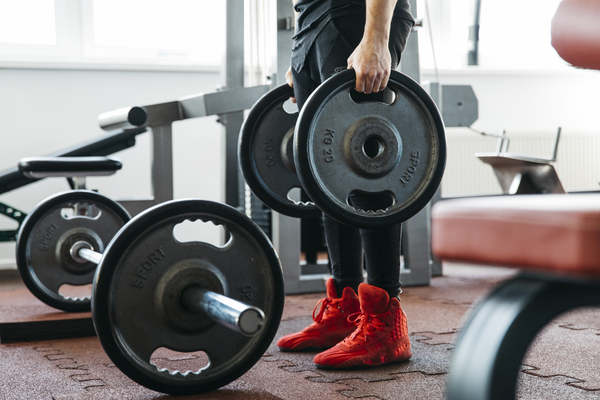High-Intensity Resistance Training (HIRT)

High-Intensity Resistance Training (HIRT) has carved out its niche within the fitness realm, offering a distinct approach to strength and endurance. Distinguished by its incorporation of full-throttle strength training exercises interspersed with brief rest intervals, HIRT challenges the body across multiple dimensions.
HIRT employs an array of exercises such as squats, kettlebell swings, and push-ups, executed at peak intensity. This methodology not only focuses on enhancing muscular endurance and strength but also emphasizes metabolic conditioning. Whether targeting the lower body, upper body, or opting for a full-body regimen, HIRT ensures a comprehensive workout.
HIRT vs. HIIT
While HIRT and High-Intensity Interval Training (HIIT) share common ground in their high-energy demands and structure, key distinctions set them apart:
· Exercise Types: HIRT revolves around resistance-focused exercises — from traditional weightlifting moves like deadlifts to plyometric exercises. In contrast, HIIT spans a broader spectrum, incorporating cardio-centric activities alongside resistance exercises.
· Intensity and Interval Structure: HIRT sessions demand maximal effort for each set, typically lasting 5 to 15 seconds, followed by extended rest periods. This contrasts with HIIT, where the intensity might not always reach the all-out effort, and the work-to-rest ratio often skews towards shorter, more frequent intervals.
· Aerobic vs. Anaerobic Focus: The elongated rest periods in HIRT slightly diminish the aerobic challenge, placing a greater emphasis on anaerobic capacity. Conversely, HIIT, with its shorter rest intervals, maintains a heightened aerobic and metabolic stress throughout the session.
Crafting a HIRT Session
A HIRT workout might involve a series of burpees for 15 seconds, succeeded by a 60-second rest, then goblet squats for 10 seconds followed by a 45-second pause. This design ensures that each burst of activity is executed with maximum effort and optimal form, underlined by the principle of significant rest ensuring the maintenance of intensity and safety.
Variations in HIRT Structure
While traditional HIRT emphasizes distinct breaks between exercises, some approaches blend exercises into supersets with no rest until the entire set is complete. This variation mirrors HIIT more closely, with longer active periods and shorter rest intervals, morphing HIRT into a strength-focused HIIT variant.
Implementing HIRT into Your Routine
For those looking to integrate HIRT into their fitness regimen, it’s vital to consider:
· Exercise Selection: Opt for movements that engage multiple muscle groups and can be safely performed at high intensity.
· Rest and Recovery: Adhere to the recommended rest intervals to maximize performance and minimize injury risk.
· Workout Structure: Beginners may start with simpler, bodyweight-based exercises, gradually incorporating weights and increasing the complexity of movements as proficiency grows.
What Are The Benefits Of HIRT Workouts?
HIRT brings forth a spectrum of health benefits, some of which echo the well-documented perks of conventional resistance training. These include:
Weight and Fat Loss: By intensifying the workout sessions, HIRT accelerates fat oxidation and calorie burning, facilitating effective weight and fat loss.
Muscle Development: The high-intensity nature of HIRT promotes muscle hypertrophy, enhancing both muscular strength and size.
Bone Health: HIRT increases bone density, contributing to a reduced risk of osteoporosis.
Cardiovascular Health: Unlike traditional strength training, HIRT significantly boosts cardiovascular fitness, thanks to its intense workout segments.
Metabolic Boost: Post-workout, HIRT has been shown to elevate resting energy expenditure more effectively than standard resistance training, suggesting a prolonged calorie-burning effect.
HIRT Workouts: A Practical Guide
To integrate HIRT into your fitness regimen, consider the following structured workouts designed to maximize strength and endurance gains:
Power HIRT Strength Training Workout #1
Warm-Up:
Jumping jacks and high knees sprinting in place for 60 seconds each.
Superset #1:
Goblet squats, dumbbell chest presses, and kettlebell swings, with 45-second rest intervals between exercises.
Superset #2:
Barbell deadlifts, weighted jump squats, and barbell rows, with 30-second rest intervals.
Superset #3:
Bulgarian split squats (each leg), lat pull-downs, and dips, with 30 to 45-second rest intervals.
Power HIRT Strength Training Workout #2
Warm-Up:
Similar to Workout #1.
Superset #1:
A sequence of squats to overhead press, incline chest presses, and deadlifts, followed by a 45-second rest.
Superset #2:
Kettlebell swings, pull-ups, and clapping push-ups, with a 45-second rest thereafter.
Superset #3:
Bulgarian split squats with rotation and side lunges with a biceps curl (both legs), followed by a 45-second rest.
